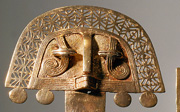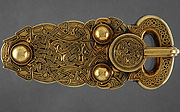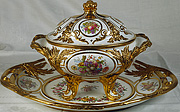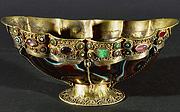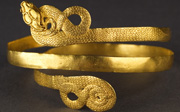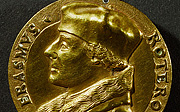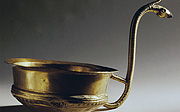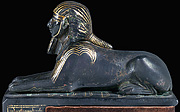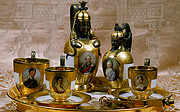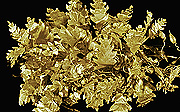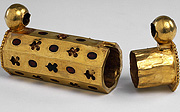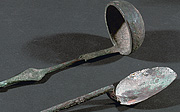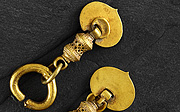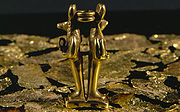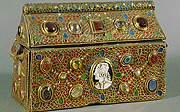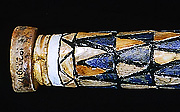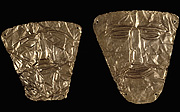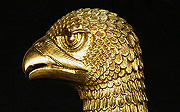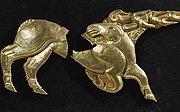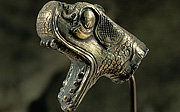
#03030112
A child's diadem, found in one of the simpler graves at the cemetery of Ur,Mesop...

#03030126
Gold and silver horn-shaped drinking cup from Marash,Syria. 5th BCE. The vessel...

#03030146
Gold cup from Ur,Mesopotamia,southern Iraq, 2.600 - 2.400 BCE. Found on the floo...

#03030268
Hunters or warriors on horseback. Harness plate, silver, gilded (400-350 BCE)....

#03030341
The Mold gold cape, Bronze Age, c1900-c1600 BC. The cape is one of the finest ex...

#03030352
Gold hammer from a tomb of an excavation at Varna, Romania. Chalcolithic (also k...

#03040123
A pair of gold crescent earrings, Fatimid dynasty, from Syria, 11th. Decorated w...

#03040124
Two jade bases for huqqa pipes. The main body of each bowl is green jade,encrust...

#030503 1
Gold plaques showing Artemis as "Mistress of the Animals", Greek, Orientalizing...

#03050363
Coronet and earrings, gold. Second half of the 4th BCE. Mounted on a terracotta...

#03050364
Earrings with garnets and pearls, 3rd century BCE. H: 3,1 cm.

#03050368
Etruscan gold ear-stud, from Etruria (Lazio), Italy, 530-480 BCE. The patterns...

